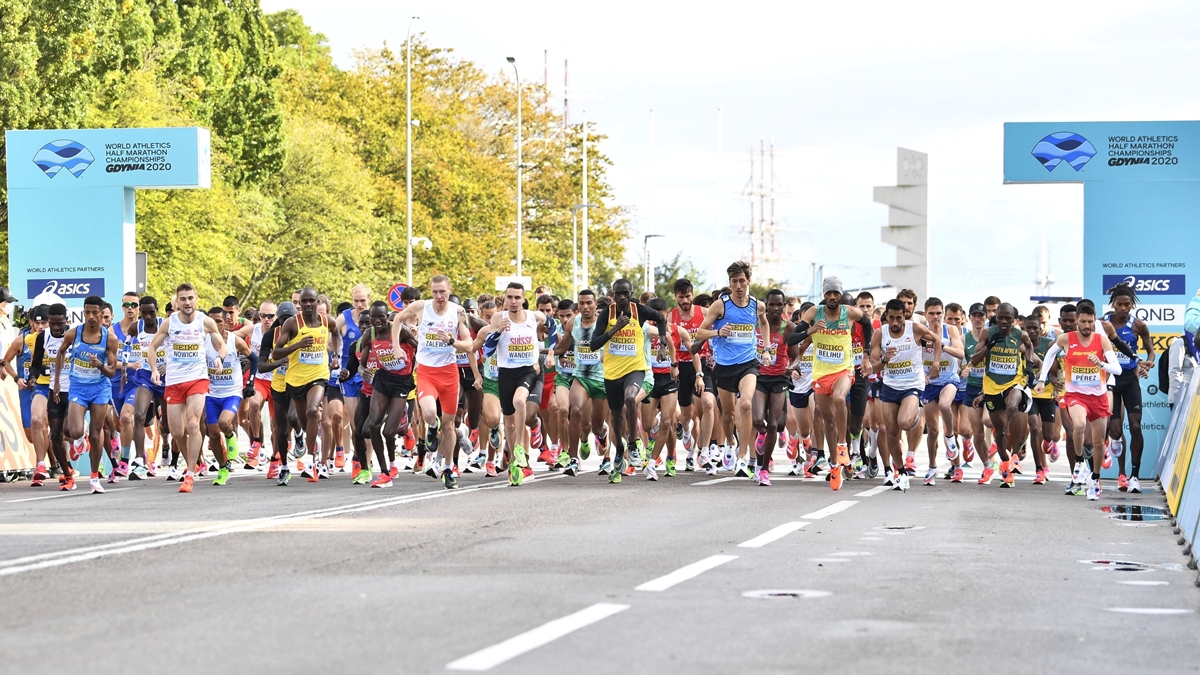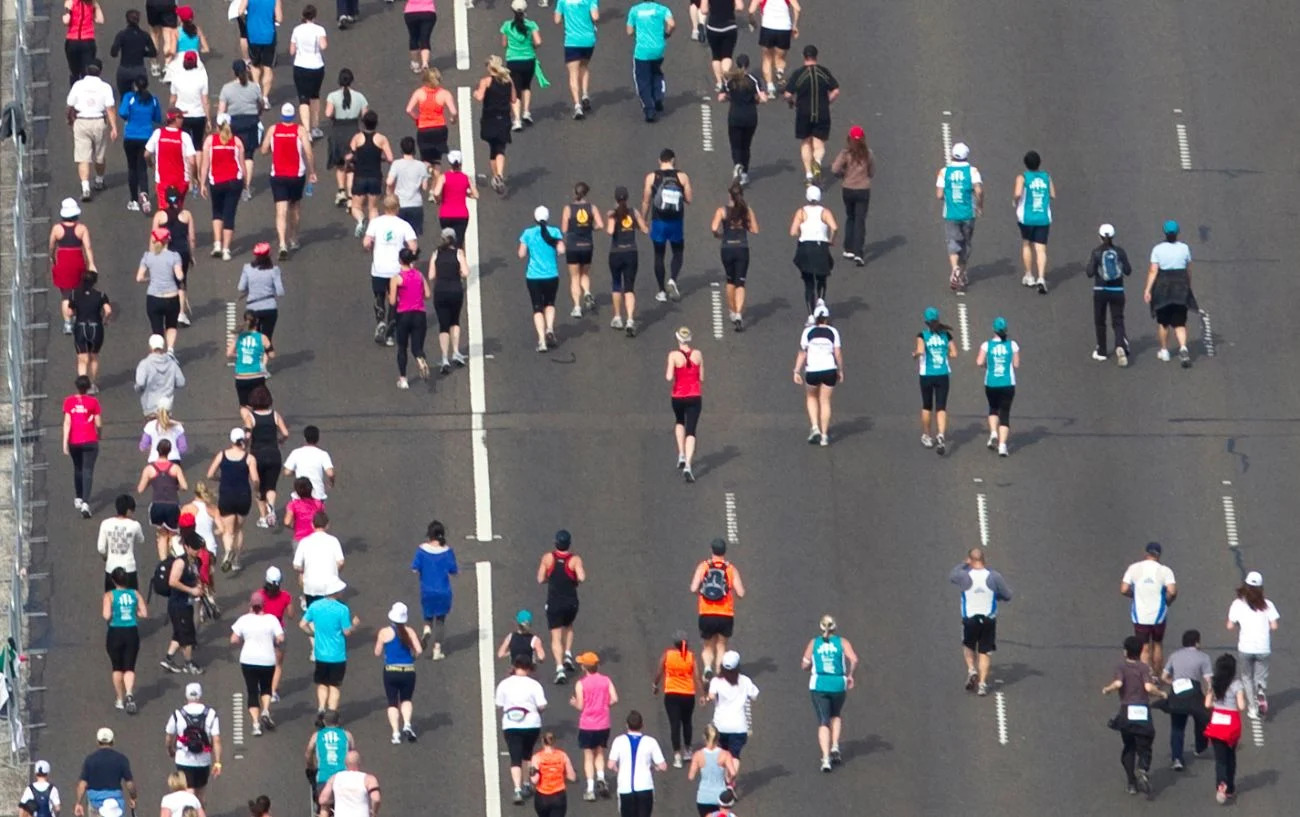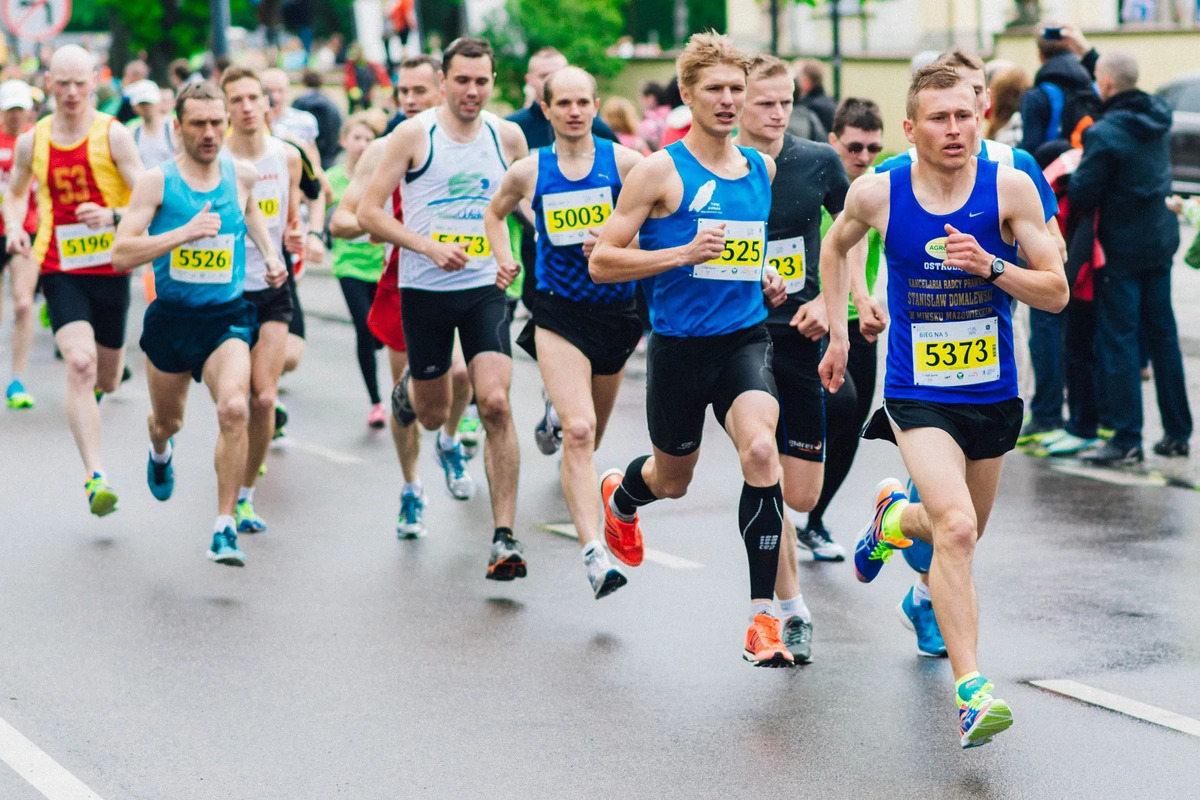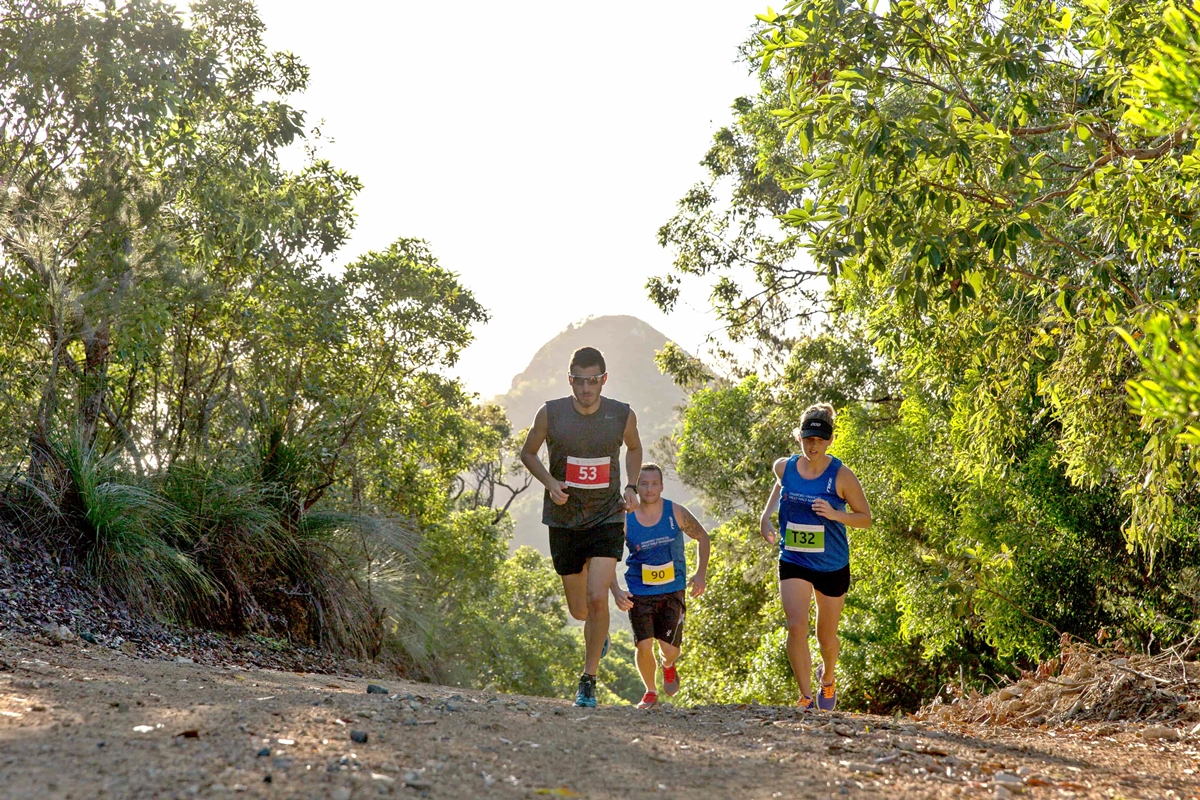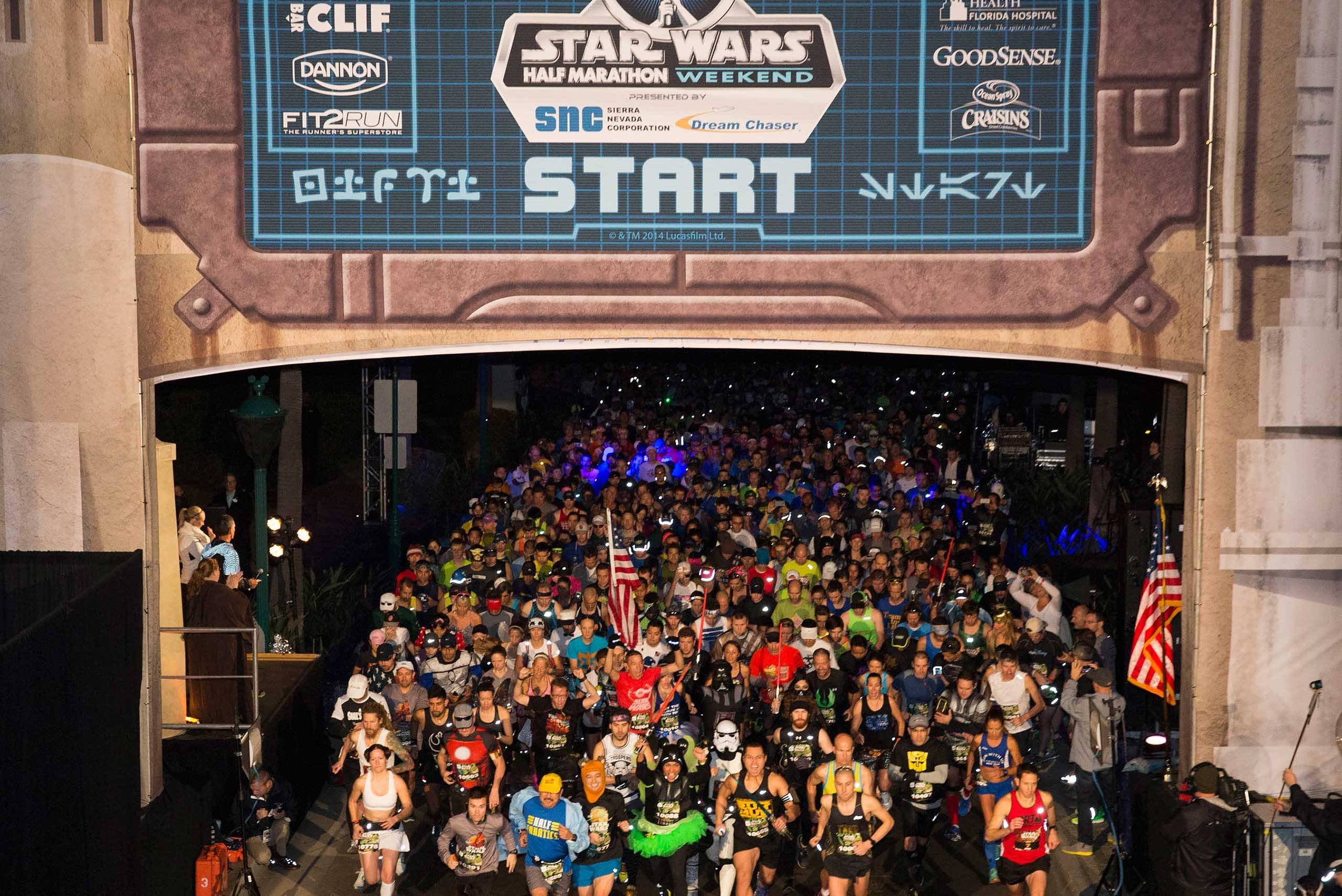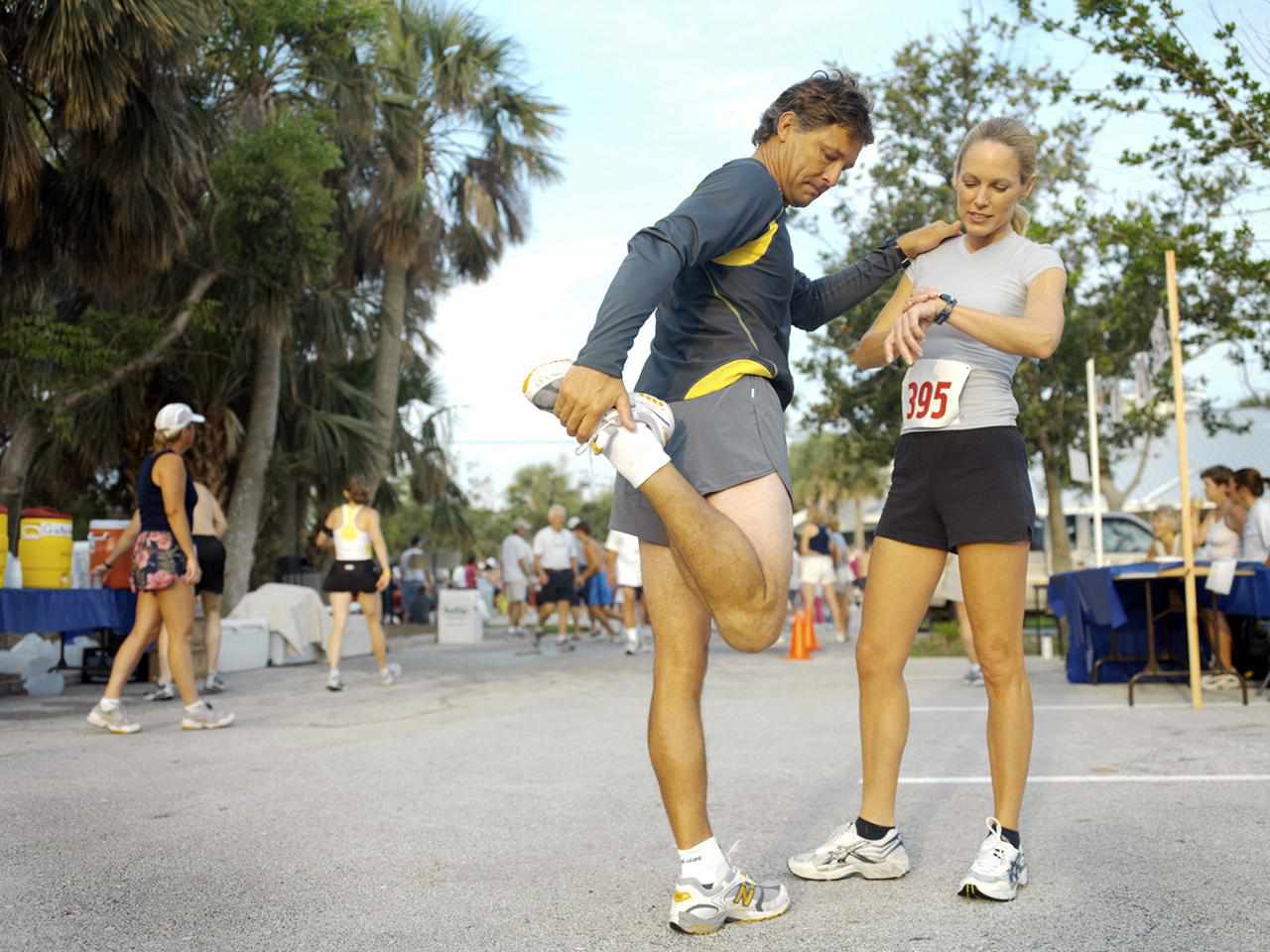

Featured
How Far Is Half Marathon
Modified: August 19, 2023
Discover how far a half marathon is and get featured in this exciting event. Join now and challenge your limits!
Introduction
Welcome to the exciting world of half marathons! Whether you are a seasoned runner or just starting out on your fitness journey, the half marathon is an achievement worth striving for. But have you ever wondered how far a half marathon really is? In this article, we will delve into the world of half marathons, exploring the distance, factors affecting it, and how to train for and successfully complete this challenging race.
A half marathon is a popular distance for runners, blending the endurance required for a marathon with the speed of a shorter race. It covers a distance of 13.1 miles or 21.1 kilometers. This unique distance provides a great challenge for both experienced runners looking to push their limits and beginners seeking to accomplish a significant fitness milestone.
There are several factors that can affect the distance of a half marathon. Terrain, elevation, and weather conditions can all impact the overall distance and difficulty of the course. Additionally, the placement of aid stations, turns, and any detours along the route can slightly alter the final distance. It’s important to keep these factors in mind when preparing for a half marathon to ensure you are adequately trained.
The measurement of a half marathon is typically done using GPS technology and certified course measurements. Race organizers use accurate mapping tools to plot out the course and measure the distance precisely. This ensures that all participants are running the same distance and that the race meets the standards set by governing bodies such as the International Association of Athletics Federations (IAAF) and the Road Running Technical Council (RRTC).
Despite the careful measurements, there are often misconceptions about the exact distance of a half marathon. Some runners may believe it is exactly half the distance of a marathon, but this is not always the case. The actual distance can vary slightly from race to race due to factors mentioned earlier. However, the majority of half marathons are held over a distance of 13.1 miles or 21.1 kilometers.
Now that we have a solid understanding of the half marathon distance, let’s explore how to train for this challenging race and successfully complete it. Whether you’re a beginner or a seasoned runner, there are key strategies and tips that will help you reach the finish line with confidence and pride.
Understanding Half Marathon
Before diving into the world of half marathons, it’s important to have a clear understanding of what exactly this race entails. A half marathon, as the name suggests, is a race that covers half the distance of a full marathon. It is a popular choice for runners who want to challenge themselves but still prefer a shorter distance compared to a full marathon.
Typically, a half marathon covers a distance of 13.1 miles or 21.1 kilometers. This distance strikes a perfect balance between endurance and speed, making it a challenging yet achievable goal for many runners. It requires a solid level of fitness and endurance training, but it’s also a great entry point for those who are new to long-distance running.
The half marathon is a race that attracts a diverse range of participants. From elite athletes aiming for a personal best to recreational runners looking for a new challenge, there is a place for everyone in the world of half marathons. The race offers a supportive and inclusive environment, where runners can connect with like-minded individuals and share their love for running.
In addition to being a physical challenge, the half marathon is also a mental test. Endurance running requires mental fortitude and determination, as runners need to push through fatigue and overcome any doubts or negative thoughts that may arise during the race. Developing a strong mental mindset is crucial for success in the half marathon.
Another important aspect to understand about half marathons is that they can be held on a variety of terrains. Some races take place on paved roads, while others may be held on trails or paths with varying levels of elevation. The choice of terrain can greatly impact the difficulty of the race and the strategies that runners need to employ.
Furthermore, half marathons can be organized as standalone events or as part of a larger racing festival. Many cities around the world hold annual half marathons, attracting both local and international participants. These events often bring the whole community together, creating a festive atmosphere and providing a platform for runners to showcase their skills.
Overall, understanding the nature of a half marathon is key to fully preparing yourself for this challenging race. It requires a combination of physical and mental preparation, as well as a thorough understanding of the race distance and the various factors that can impact the overall experience. With the right training and mindset, completing a half marathon can be a highly rewarding and unforgettable achievement.
Factors Affecting Half Marathon Distance
While the standard distance for a half marathon is 13.1 miles or 21.1 kilometers, there are a few factors that can affect the actual distance runners will cover during the race. These factors can slightly alter the course length and add an extra challenge or advantage to the race. Understanding these factors is important for both participants and race organizers to ensure a fair and accurate measurement of the distance.
One of the primary factors that can impact the half marathon distance is the terrain. Courses can vary from flat and smooth surfaces to hilly and challenging terrains. A hilly route can make a half marathon more physically demanding, requiring runners to exert additional effort to conquer the inclines. On the other hand, a flat course can lead to faster running times, allowing participants to maintain a consistent pace and potentially achieve personal bests. The terrain can significantly influence the overall distance covered and the difficulty of the race.
Weather conditions are another crucial factor that can affect the half marathon distance. Extreme heat or strong winds can slow down runners and make the race feel longer than it actually is. On the flip side, favorable weather conditions, such as cool temperatures and a tailwind, can contribute to faster race times and a smoother experience. It’s important for runners to consider the weather forecast and adjust their pace and strategy accordingly during the race.
The measurement and certification of the course also play a significant role in determining the actual distance of a half marathon. Race organizers strive to provide an accurate and precise course measurement, using advanced technology like GPS and certified course measurements. However, even with meticulous planning, some minor discrepancies can occur due to factors such as mapping errors or last-minute route changes. These variations tend to be minimal but can add or subtract a few meters from the overall distance.
In addition to the course itself, the layout of aid stations, turns, and any detours along the route can influence the distance covered during a half marathon. Aid stations are strategically placed at regular intervals to provide runners with water, electrolytes, and sometimes snacks. The placement of these stations can impact the distance runners need to cover to access the necessary hydration and fuel. Furthermore, any unexpected turns or detours due to road closures or safety concerns can add extra distance to the race route.
Overall, while the standard distance for a half marathon remains constant at 13.1 miles or 21.1 kilometers, several factors can slightly alter the actual distance covered during the race. The terrain, weather conditions, course measurement, and route layout can all impact the length and difficulty of the race. It’s important for runners to be aware of these factors so they can adjust their expectations and strategies accordingly. Regardless of these variations, completing a half marathon is a remarkable achievement that requires dedication, training, and determination.
The Measurement of Half Marathon
Accurate measurement of a half marathon course is essential to ensure fairness and consistency in races. Race organizers use advanced technology and precise techniques to measure and certify the distance of a half marathon. This ensures that all participants are running the same distance and that the race meets the standards set by governing bodies such as the International Association of Athletics Federations (IAAF) and the Road Running Technical Council (RRTC).
The process of measuring a half marathon course starts with careful planning and mapping. Race organizers work closely with course measurers who are experienced professionals in accurately measuring race routes. They take into account factors like road conditions, potential hazards, and participant safety while plotting out the course.
Once the course is determined, advanced technology like GPS devices is used to measure the distance. GPS devices provide precise measurements by tracking the exact location and distance covered during the mapping process. These devices are typically carried by professional course measurers who walk or run the entire route, ensuring accuracy in the recorded distance.
In addition to GPS technology, certified courses often use the “Jones Counter” method for measurement. The Jones Counter is a mechanical device attached to a bicycle wheel that records the revolutions made while cycling the course. This information is then converted into distance, ensuring an accurate measurement of the route.
After completing the measurement process, the course measurers make any necessary adjustments to account for variations caused by inclines, turns, and other factors. They take into consideration the standard measurement criteria defined by governing bodies and strive to ensure that the course meets the required distance of a half marathon.
Once the course is measured and certified, it is important for race organizers to maintain the accuracy of the distance year after year. They may conduct periodic re-measurements to account for any natural changes to the course or make adjustments based on feedback from participants and observations made during the race.
It’s worth noting that even with meticulous planning and measurement, there may be minor variations in the recorded distance of a half marathon. These variations can be influenced by factors such as mapping errors, last-minute course changes, or discrepancy between different measuring devices. However, the goal of race organizers is always to provide the most accurate measurement possible, ensuring fairness and consistency for all participants.
By carefully measuring and certifying the distance of a half marathon, race organizers ensure that all runners are competing on a level playing field. This allows participants to accurately gauge their performance and compare their results with others, fostering a competitive and enjoyable racing experience. The precise measurement of a half marathon course is a testament to the dedication and commitment of race organizers, course measurers, and the running community as a whole.
Common Misconceptions about Half Marathon Distance
There are several common misconceptions surrounding the distance of a half marathon that can lead to confusion among runners and spectators. It’s important to debunk these misconceptions to provide a clear understanding of what it truly means to complete a half marathon.
One of the most prevalent misconceptions is that a half marathon is exactly half the distance of a full marathon. While the name suggests this, the actual distance of a half marathon is 13.1 miles or 21.1 kilometers. The discrepancy arises from variations in course measurements, road layouts, and other factors specific to each individual race. Therefore, it is crucial for runners and spectators to be aware that a half marathon is not precisely half the length of a marathon.
Another common misconception is that half marathons are easier than full marathons. While it is true that completing a full marathon requires a higher level of endurance and training, half marathons still present a considerable challenge. The distance demands significant physical and mental preparation, and runners need to put in consistent training to build up their stamina. Underestimating the difficulty of a half marathon can lead to inadequate training and disappointment.
Some may also mistakenly believe that half marathons are only for experienced runners. On the contrary, half marathons are suitable for runners of all levels, from beginners to experienced athletes. They offer an intermediate challenge between shorter races like 5Ks or 10Ks and the grueling distance of a full marathon. With proper training and dedication, anyone can set a goal to complete a half marathon.
Furthermore, there is a misconception that all half marathons have the same level of difficulty. In reality, the difficulty of a half marathon can vary greatly depending on factors such as the terrain, weather conditions, and overall course design. Hilly routes, extreme heat, or strong winds can significantly impact the level of difficulty, making some half marathons more challenging than others. It’s important for runners to research and choose a race that aligns with their skill level and goals.
Lastly, many people assume that finishing a half marathon is not a significant achievement compared to a full marathon. This couldn’t be further from the truth. Completing a half marathon is a remarkable accomplishment that requires dedication, perseverance, and months of training. It represents a significant milestone in a runner’s journey and deserves to be celebrated. Every finisher of a half marathon should take pride in their achievement, regardless of whether they have completed a full marathon before or not.
By debunking these common misconceptions about the distance of a half marathon, we can provide a clearer understanding of the challenge and significance of this race. Recognizing the actual distance, the level of difficulty, and the inclusivity of half marathons encourages more people to set and achieve their own personal running goals.
Training for Half Marathon
Preparing for a half marathon requires a systematic and disciplined training program to build endurance, improve speed, and reduce the risk of injuries. Whether you’re a beginner or an experienced runner, following a well-structured training plan is crucial for success in completing a half marathon.
The key to a good training program is gradually increasing mileage and intensity over time. It’s important to start with a base level of fitness by incorporating regular running into your routine. This helps condition your body to handle the demands of longer distances and prepares you for the intensity of half marathon training.
A typical training program for a half marathon lasts around 10-12 weeks. This allows sufficient time for your body to adapt and become resilient to the increased mileage and physical demands of the race. It’s essential to find a training plan that fits your schedule and capabilities, whether that’s a beginner’s program or a more advanced plan for experienced runners.
The training program should include a combination of running workouts, cross-training, rest days, and recovery runs. Long runs are the backbone of half marathon training and gradually increase in distance as you progress through the program. These runs help build endurance and teach your body to sustain a steady tempo for an extended period.
In addition to long runs, speed workouts such as intervals, tempo runs, and hill repeats are important for improving your running efficiency and increasing your overall speed. These high-intensity workouts challenge your cardiovascular system, build strength, and enhance your ability to maintain a faster pace during the race.
Cross-training activities like cycling, swimming, or strength training are beneficial for preventing overuse injuries and providing a break from running. They help improve overall fitness, build strength in different muscle groups, and maintain an active recovery during the training process.
Rest days are equally important in any training program. They allow your body to recover, repair damaged muscles, and reduce the risk of overtraining. It’s crucial to listen to your body and take rest days whenever you feel fatigued or excessively sore. Ignoring rest can lead to burnout or injuries that may hinder your progress.
Proper nutrition and hydration are also key components of half marathon training. Fueling your body with a balanced diet, including carbohydrates, proteins, and healthy fats, provides the necessary energy for workouts and aids in recovery. Staying hydrated before, during, and after your runs is crucial to maintain optimal performance and prevent dehydration.
Lastly, incorporating foam rolling, stretching, and post-run recovery techniques into your routine can help alleviate muscle tightness, improve flexibility, and reduce post-run soreness. Taking care of your body and allowing it to recover effectively is essential for longevity and overall performance.
Remember, each runner is unique, and it’s important to listen to your body throughout the training process. Adjust the training plan as needed based on your individual capabilities and progress. With dedication, consistency, and a well-structured training program, you’ll be well-prepared to conquer the half marathon challenge.
Tips for Successfully Completing a Half Marathon
Completing a half marathon is a significant achievement that requires careful preparation, determination, and mental fortitude. To help you navigate this challenging race and reach the finish line with confidence, here are some key tips to keep in mind:
1. Follow a Training Plan: Stick to a structured training plan that gradually builds your mileage and incorporates speed workouts, long runs, and rest days. Consistency and discipline are key to success.
2. Set Realistic Goals: Set achievable goals based on your current fitness level and experience. Make sure your goals are specific, measurable, and time-bound, giving you something to strive for during your training.
3. Prioritize Rest and Recovery: Allow for adequate rest days and recovery time in your training schedule. Your body needs time to repair and rejuvenate to avoid overtraining and minimize the risk of injuries.
4. Cross-Train: Incorporate cross-training activities such as swimming, cycling, or strength training to improve overall fitness, prevent overuse injuries, and provide a break from running.
5. Practice Proper Nutrition: Fuel your body with a well-balanced diet that includes carbohydrates, proteins, and healthy fats. Stay hydrated before, during, and after your runs to maintain optimal performance.
6. Test Your Gear: Make sure you have properly fitting running shoes and comfortable clothing for the race. Test out your gear during your training runs to avoid any discomfort or issues on race day.
7. Practice Race-Day Nutrition and Hydration: Experiment with different fueling strategies and hydration methods during your long runs to find what works best for you. Avoid trying anything new on race day to prevent digestive issues.
8. Pace Yourself: Start the race at a comfortable pace and avoid going out too fast. Maintain a steady pace throughout the race and save energy for a strong finish.
9. Mental Preparation: Develop a positive mindset and mental strategies to overcome challenges during the race. Break the distance into smaller milestones and focus on one step at a time to stay motivated.
10. Enjoy the Experience: Embrace the journey and enjoy the race day atmosphere. Engage with fellow runners, cheer on others, and soak in the sense of accomplishment as you cross the finish line.
Remember that every runner is unique, so find what works best for you and adapt these tips to fit your individual style and preferences. Half marathons are as much about the journey as they are about the finish line, so make the most of your training and enjoy the process of preparing for this incredible achievement.
Conclusion
Completing a half marathon is a challenging and rewarding endeavor that requires dedication, training, and mental resilience. By understanding the distance, debunking misconceptions, and following a well-structured training plan, you can embark on this journey with confidence and set yourself up for success.
A half marathon is not just a test of physical endurance; it also pushes you mentally and emotionally. It teaches you the power of perseverance, discipline, and the ability to overcome self-doubt. The sense of accomplishment and pride that comes with crossing the finish line is unparalleled.
Throughout your training, remember to prioritize rest and recovery, fuel your body with proper nutrition, and listen to your body’s signals. Pay attention to your goals and adjust them as needed, remain consistent with your training, and surround yourself with a supportive network of fellow runners.
On race day, pace yourself, stay hydrated, and embrace the experience. Engage with the running community, cheer on fellow participants, and soak in the atmosphere. Remember that every step brings you closer to completing this remarkable achievement.
Whether you are a beginner aiming to accomplish a fitness milestone or an experienced runner seeking a new challenge, the half marathon offers an opportunity for personal growth, self-discovery, and a chance to push beyond your limits.
So lace up your running shoes, embrace the training journey, and embark on the adventure of completing a half marathon. With determination, consistency, and a positive mindset, you’ll persevere through the miles, surpassing your own expectations, and realizing the incredible strength and resilience within you.
